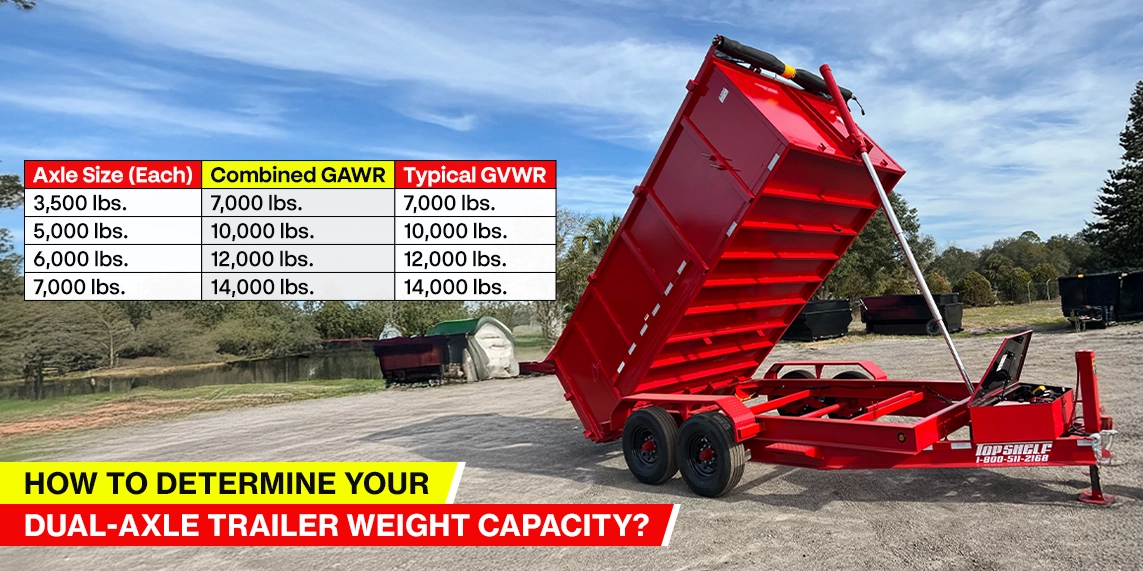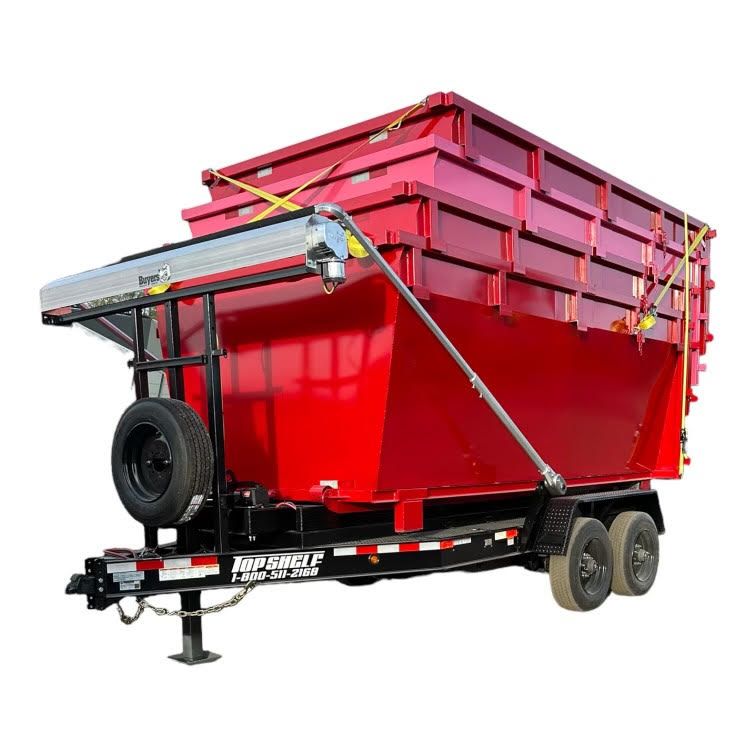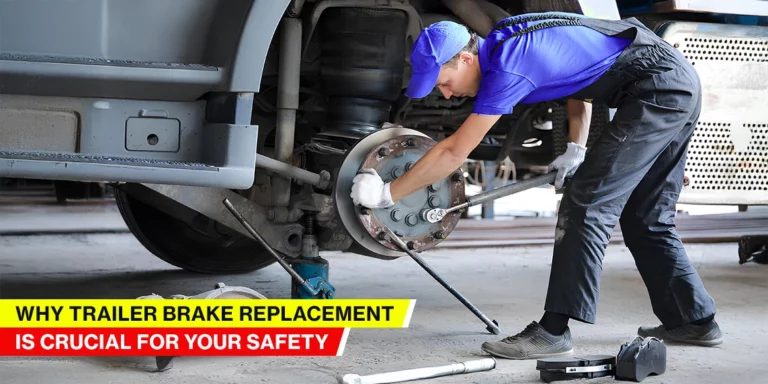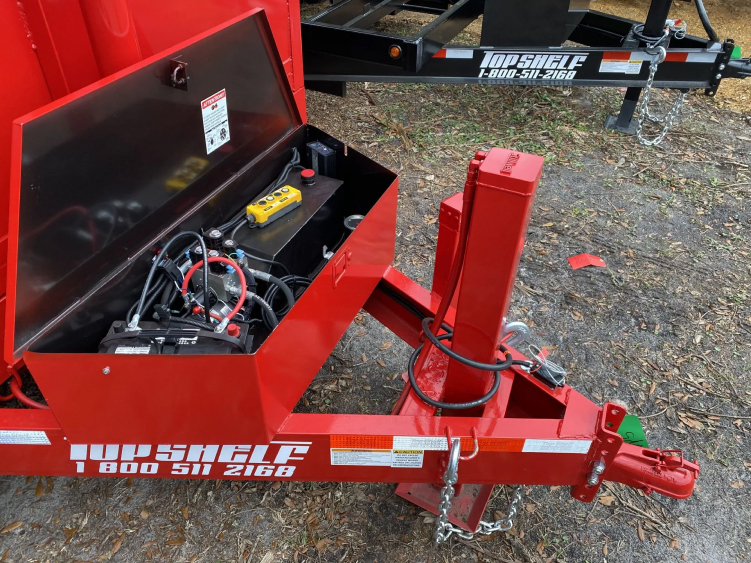If you own a dual-axle trailer, you must understand its weight capacity. This is especially important if you are pulling construction equipment or hauling heavy loads.
It’s difficult for most trailer owners. Perhaps you’ve asked yourself:
“Will my trailer support this load?”
“Why do we have all these weight ratings?”
“Will I be fined or ruin my trailer if I overfill it?”
Loading your trailer more than it can carry will cost you a ticket. Furthermore, it can cause problems with blown tires, warped axles, failing brakes, and unsafe driving. It can also reduce the lifespan of your trailer or cause a terrible accident when driving.
Fortunately, you don’t have to guess. This blog will explain what you must know to determine your dual-axle trailer weight capacity.
We’ll cover key weight ratings, how to identify them and some helpful tips to enable you to tow safely, legally, and confidently. Let’s get started.
What Is Axle Weight And Why It Matters?
Axle weight refers to the weight a single axle on your trailer can support. In a dual-axle trailer, two axles carry the weight. This allows more weight to be carried and remains stable than in single-axle trailers.
We have detailed the key reasons for knowing your axle weight:
1. Tire Blowouts
When you overload a trailer, the tires must carry more than their original capacity. The excess pressure caused by this overloading generates heat and makes tire blowouts more probable. They become a high probability, particularly when traveling at high speeds. Blown tires during towing will also cause the trailer to swing out of control, endangering your life and the lives of other road users.
2. Suspension Damage
The trailer’s suspension is designed to support a certain amount of weight. Overloading this weight will cause the springs to sag. This could reduce the lifetime of the shocks and break or twist the axles. These issues not only decrease the trailer’s performance level but also cause expensive repairs or complete failure.
3. Unsafe Towing Conditions
Overloading a trailer will probably upset its balance, braking, and handling. It will slow to a stop, decrease its grip on the road, and become harder to control, especially on a downhill slope or in windy weather. This is dangerous for the driver and for all other road users.
4. Legal Penalties for Overloading
Towing heavier than your trailer is for is not only dangerous—it’s against the law. Most states have strict towing weight regulations. You could face fines or have to unload your load. Additionally, you could have the trailer confiscated if you’re caught towing heavier than your trailer or axles are rated for.
Understanding Key Weight Ratings
Before you load your trailer, it is helpful to know the most important weight ratings that indicate how much it can safely be loaded. These are model-specific ratings that provide precise limits so that you will not be overloaded by the dangers that come with it.
1. Gross Vehicle Weight Rating (GVWR)
GVWR is the total weight your trailer will bear when loaded. That includes everything—the trailer, plus all the freight, liquids, and any other equipment or accessories.
GVWR is not recommended; it’s a safety threshold to safeguard the trailer frame, tires, axles, and brakes. The GVWR is stamped on the trailer VIN or ID plate, typically near the trailer’s front. Overloading past this threshold compromises handling, braking, and overall safety.
2. Gross Axle Weight Rating (GAWR)
GAWR is the most weight you can place on one axle. Each axle on your trailer has a GAWR rating. You must go through these ratings individually. For a double-axle trailer, the total GAWR is the weight both axles can bear collectively.
The combined weight the axles can carry should never exceed the GVWR. Keeping the weight below the GAWR will help prevent overloading the axles, suspension, and tires, and this can help prevent issues.
3. Payload Capacity
Payload capacity refers to how much weight you can put on the trailer while being safe. It does not take into account the trailer’s weight. To calculate the payload capacity, you need to subtract the trailer’s empty weight from the GVWR.
For instance, if your trailer’s GVWR is 7,000 pounds and weighs 2,000 pounds when empty, its payload capacity is 5,000. Overloading the payload will impact stability and put the trailer frame and components under excessive stress.
4. Tongue Weight
Tongue weight is the force of downward pressure applied by the trailer tongue to the towing vehicle’s hitch. It is crucial to the quality of your trailer’s tow. Ideally, tongue weight should be 10% to 15% of the loaded trailer weight.
If the tongue weight is too low, the trailer will sway. If it is too high, it can overload the tow vehicle’s rear suspension and cause steering problems. Proper tongue weight balancing makes towing safe and smooth.
How Much Weight Can A Double Axle Trailer Hold?
Axle ratings and trailer construction determine the weight-carrying capacity of a dual-axle trailer. Typical combinations are:
- Two 3,500 lbs. axles: 7,000 lbs. GVWR
- Two 5,000 lbs. axles: 10,000 lbs. GVWR
- Two 6,000 lbs. axles: 12,000 lbs. GVWR
- Two 7,000 lbs. axles: 14,000 lbs. GVWR
For instance, a 7×14 tandem axle trailer with two 3,500 lbs. axles is for 7,000 lbs. gross vehicle weight. If it weighs 2,120 lbs. empty, the payload capacity would be 4,880 lbs.
How to Determine Your Dual-Axle Trailer Weight Capacity
Finding out how much weight your dual-axle trailer can hold is not hard. With some important details, you can figure out the safe weight limit for your trailer and prevent overloading problems.
We have detailed a simple step-by-step guide:
1. Locate the Manufacturer’s VIN or ID Plate
First, find the trailer’s VIN (Vehicle Identification Number) or ID plate. It’s typically a metal plate bolted to the trailer tongue or frame near the front on the driver’s side.
This plate contains vital information, such as the Gross Vehicle Weight Rating (GVWR) and the Gross Axle Weight Rating (GAWR).
These are the figures you obtain from your manufacturer and are your legal and physical axle weight restrictions. Without them, you are just taking a guess—which is unsafe.
2. Check the Trailer Axle Weight Ratings
Each axle on your trailer is for weight as the GAWR. These will typically be on little stickers on the axle or in the manual for your trailer.
You combine the two axles’ ratings to determine the combined axle support rating. For instance, if each of the two axles is at 3,500 lbs., your combined axle rating will be 7,000 lbs.
But that doesn’t mean you’re always allowed to tow to that capacity. Your actual capacity is still limited by the smaller number of either combined GAWR or GVWR specified on the ID plate.
3. Know the Empty Weight of Your Trailer
The curb weight or dry weight of the trailer is its weight without cargo, liquids, or equipment. This figure may be located on the VIN plate or in the owner’s manual.
You must know the empty weight, as this will enable you to determine how much weight you can safely carry. Divide the GVWR by the empty weight to determine your trailer’s payload capacity.
For instance, if your trailer capacity is 7,000 lbs. and it weighs 2,500 lbs. in a clean state, you can only carry 4,500 lbs.
How to Check or Measure Weight on Trailer Axles?
Once you know your trailer’s weight capacity, the next thing to do is keep your load at or below that capacity. Weighing or axle weight checking on your trailer allows you to know that your load is safe, even, and within manufacturer guidelines and laws.
We have detailed the process of measuring weight on trailer axles:
1. Use a Public Scale, Such As a CAT Scale
One of the better ways to determine how much your trailer weighs is to have it scaled at a certified public scale. CAT Scales are typically located at truck stops across the United States and provide rapid, precise weight readings. Drive your entire rig and trailer onto a loaded scale to get a reading on a scale.
This will provide the Gross Combined Weight, incorporating the trailer, cargo, and tow vehicle weight. This is particularly convenient before a long haul or towing unrecognizable or variable loads.
2. Obtain Individual-axle Weights to Ensure Even Distribution
Knowing how much the trailer weighs is important, but it is also important to know what weight is apportioned across each axle. A few scales have divided platforms, so you can weigh each axle separately.
This helps you verify whether one axle carries more weight than the other. It is a frequent problem that may cause uneven tire wear, poor handling, or suspension damage. In the case of dual-axle trailers, the weight has to be distributed evenly to offer stability and safety on the road.
3. Compare the Measured Weights to the GAWR and GVWR
After obtaining them, compare your axle weights to the GAWR for each axle and to the total GVWR of the trailer. These are the highest ratings your trailer’s maker has rated your trailer capable of carrying.
If any of the weights you’re weighing exceed these levels, you must decrease your load or redistribute it. You must also take care to be safe again while towing to prevent fines, equipment damage, or safety risks.
Legal and Safety Considerations
Towing more than your trailer is risky and can also result in legal problems.
Overloading a dual-axle trailer can have serious consequences, both in terms of safety and compliance. Thus, responsible towing is essential to understanding the risks and adhering to regulations.
1. Fines and Penalties
Many states enforce strict laws regarding trailer weight limits. You could face fines if caught hauling a load that exceeds the legal or manufacturer-rated limits. Additionally, you could face citations or even be suspended from taking the road until the load is corrected.
Commercial drivers, in particular, are often subject to roadside inspections and weigh stations. Overloaded trailers can trigger costly delays and penalties here.
2. Increased Stopping Distances
When your trailer is overloaded, your vehicle’s braking system has to work much harder to slow down or stop. This increases the stopping distance, making responding to sudden traffic changes or emergencies harder. In severe cases, this can result in brake fade or complete brake failure—especially dangerous on downhill grades.
3. Tire and Axle Failure
Every tire and axle can carry a certain amount of weight. Exceeding these ratings can lead to tire blowouts, overheating, or axle bending or cracking. These failures can be catastrophic at high speeds and are often the result of ignoring GAWR or improper weight distribution.
4. Reduced Control While Towing
An overloaded or imbalanced trailer is significantly harder to control. It may sway more on the highway, fishtail when turning, or cause the tow vehicle to become unstable. These issues make driving dangerous not just for you but for everyone sharing the road.
According to federal bridge formula regulations, the maximum legal weight for a tandem (dual) axle group is 34,000 pounds. However, this figure applies to large commercial rigs and should not be used as a standard utility or cargo trailer guideline.
We recommend deferring to the manufacturer’s specified GVWR and GAWR. These limits are tailored to your specific trailer’s build, materials, and components. Staying within those limits is the best way to protect your investment and your safety.
Tips for Staying Within Axle Weight Limit
Staying within safe weight limits requires planning and ongoing attention, even if you know your trailer’s capacity. These practical tips will help you load smarter, tow safer, and protect your equipment from unnecessary wear and tear.
1. Distribute Weight Evenly Between Both Axles
Proper weight distribution is critical for stability. When loading your trailer, make sure the weight is spread as evenly as possible across both axles. Uneven loading can overload one axle while underutilizing the other. It could result in imbalanced wear on tires and suspension components and even risk axle failure.
2. Place Heavier Items Low and Centered
You must always load the heaviest items on the floor and close to the trailer’s center. It will help in keeping the trailer balanced and reduce the risk of tipping or swaying. A low center of gravity improves towing control and minimizes movement during travel. This takes effect, especially when taking turns or driving over uneven surfaces.
3. Regularly Check Tire Pressure and Axle Condition
Tires and axles are your trailer’s foundation. Always keep your tires inflated to the recommended pressure listed on the sidewall or in the trailer’s manual. Underinflated tires are more likely to overheat and blow out. Also, inspect your axles periodically for signs of wear, rust, or damage to ensure they can handle the load safely.
4. Never Exceed the Lowest Rated Component
Your trailer’s capacity is only as strong as its weakest link. This means you must respect the limits of all major components, including the axles, tires, frame, and hitch. When towing, the lowest-rated component of your setup will influence your safe load limit.
5. Weigh Your Trailer Periodically, Especially When Carrying Different Loads
Loads can vary dramatically depending on what you’re hauling. They may include building supplies, vehicles, equipment, or household goods. Whenever your cargo changes significantly, stopping at a public scale to check your total and axle weights is smart. This ensures you’re still within safe limits and your load is distributed correctly.
Ready For A Heavy-Duty Trailer You Can Rely On? Call Top Shelf Trailers
You must identify your dual-axle trailer weight capacity to ensure safe driving. Moreover, it can help secure the cargo, vehicle, and investment involved.
We recommend maintaining your trailer at peak performance by identifying the Gross Vehicle Weight Rating (GVWR), confirming the empty trailer weight, and exploring the weight distribution. This can also help you comply with the law.
You must know your limitations to avoid expensive errors when hauling heavy equipment and machinery. This will also benefit you by furthering the life of the trailer.
Top Shelf Trailers designs the best single- and dual-axle trailers out there, able to withstand anything you give them. They provide the best craftsmanship, reasonable prices, and excellent customer service, so they are the best go-to for dependable trailers that you can count on.
Explore all their trailers today and let them help you haul with confidence.




